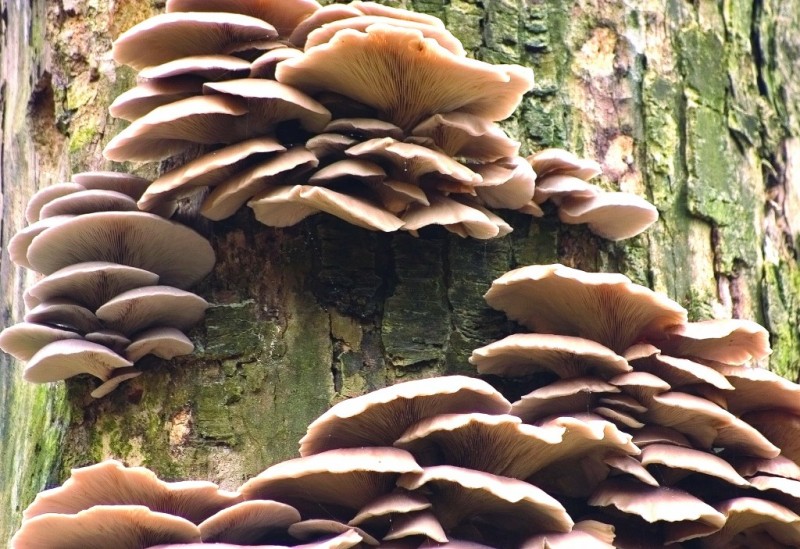
It used to be that the only fresh mushrooms you would see in the grocery store would be the common button mushroom. In the past twenty years the portobello mushroom, which is actually the fully mature version of the button mushroom, became an alternative to its younger cousin. With the development of improved culturing techniques, the shiitake mushroom gained popularity in gourmet shops and health food stores. Today, you can go into some of the chain supermarkets and find several varieties of mushrooms in the produce section. One of my favorites, which are gaining in popularity, are the oyster mushrooms (Pleurotus ostreatus).
Oyster mushroom (Photo contributed)
Oyster mushrooms have a flavor that some find mildly reminiscent of sea food and, when cooked, have a texture that one might say resembles oysters. But the name comes more from the growth pattern than the flavor or texture. Unlike most mushrooms whose stalks grow from the center of the cap, the stalk of the oyster mushroom grows to the side of the cap, much like oysters attached to a rock. They also tend to grow in clusters, just like oysters cluster on rocks at the sea shore. This growth habit makes it one of the most easily identified wild mushrooms and it is considered one of the safest for a novice mushroom hunter to gather. The gills on the underside fan out from the stem and have knife-like edges. They generally range in color from a very light tan to a brownish gray. There some inedible mushrooms that resemble oyster mushrooms, but no poisonous look-alikes.
Oyster mushrooms are found in the wild from late summer to well into winter, but are most common in late October through early December. This season has been so warm and dry that I found my first good batch just this week. They are some of the easiest mushrooms to grow at home. While most home-grown mushrooms, such as shiitakes, requires a sterile culture that must be sealed in a log with wax, some have grown oyster mushrooms by just drilling a hole in a log and stuffing a small piece of a fresh mushroom in the hole. They may be the least picky of the mushrooms for home cultivation. They grow on a range of hardwoods, usually on dead or injured standing wood or downed logs. I have found them on birches, beeches, and maples, but most often on tulip poplars. In fact, the Cherokee name I found for this mushroom is tawali tsiyu usta or ‘mushroom that sticks to the tulip poplar’, and they are known locally by the common name, ‘poplar mushroom’. That makes perfect sense. There are a lot more poplars in the mountains than there are oysters.
Oyster mushrooms are delicious and have a nice texture when cooked. However, it is the health-promoting qualities of this mushroom that make it a valuable component of the wild food diet. They contain more protein per serving than most fresh-water fish, eggs, or cheese; they are low in fat; and they are a good source of minerals and B vitamins. Oyster mushrooms contain natural statins that lower blood cholesterol, have been observed to prevent or reduce cancerous tumors, and exhibit antiviral properties. It is hard to go wrong with this wild treat!
David is the project director for the RTCAR (Revitalization of Traditional Cherokee Artisan Resources) organization.
























